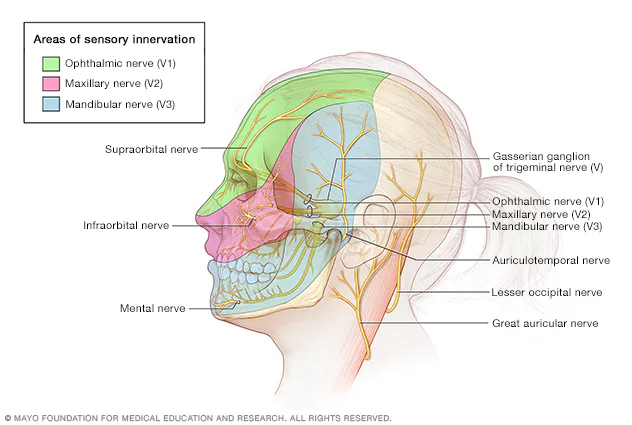- August Kranti Resolution: “Do or Die”
- Mass upsurge: youth, students, underground networks
- Arrest of all top leaders, movement became leaderless
- Brutal repression: lathi charge, aerial bombing
- Gandhi’s fast, failure of Cripps Mission
The Quit India Movement, launched on August 8, 1942, was a pivotal episode in India’s struggle for independence from British colonial rule. Spearheaded by the Indian National Congress (INC) under the leadership of Mahatma Gandhi, the movement called for an end to British rule in India and mobilized mass protests across the country.Despite its nonviolent ethos, the movement faced brutal suppression from the British authorities, who responded with widespread arrests and violent crackdowns.
Leadership
Key Figures:
- Mahatma Gandhi: As the principal leader of the Indian National Congress (INC), Gandhi played a crucial role in mobilizing the masses. His call for “Do or Die” emphasized the urgency for immediate action against colonial rule and inspired widespread participation.
- Jawaharlal Nehru: A prominent leader within the INC, Nehru’s vision for a free India resonated with the youth and urban population, enhancing their involvement in the movement.
- Sardar Vallabhbhai Patel: Known for his organizational skills, Patel was instrumental in rallying support from various regions and communities, emphasizing unity in the face of oppression.
- Other Leaders: Figures like Maulana Abul Kalam Azad and Aruna Asaf Ali also contributed significantly, helping to galvanize different sections of society.
Leadership Style:
- The leadership was characterized by a nonviolent approach, rooted in Gandhian philosophy. This strategy aimed to mobilize the masses while minimizing bloodshed, although it faced challenges due to the escalating violence from British authorities.
Participation
Widespread Mobilization:
- The Quit India Movement saw mass mobilization across diverse demographics, including students, women, workers, and peasants. This broad participation marked a significant shift in the struggle for independence, as it included voices from various social strata.
Demographics:
- Students: Young people were particularly active, organizing protests, strikes, and demonstrations in colleges and universities.
- Women: Women played a crucial role, breaking traditional gender roles by participating in protests and leading initiatives. Their involvement added a new dimension to the movement.
- Workers and Peasants: Economic grievances, such as rising prices and exploitation by landlords, motivated workers and peasants to join the struggle, highlighting the intersection of economic and political issues.
Regional Variations:
- Participation varied by region, with urban centers experiencing intense activism, while rural areas also engaged in local protests against colonial policies. The movement’s ability to transcend regional and communal boundaries showcased a unified national sentiment for independence.
Brutal Suppression
British Response:
- The British government reacted swiftly and violently to the Quit India Movement. Declaring the movement illegal, they employed extensive measures to suppress dissent.
Repressive Tactics:
- Arrests: Over 100,000 individuals, including key leaders of the INC, were arrested without trial. This mass arrest aimed to dismantle the leadership structure of the movement.
- Violence: Police and military forces used brutal tactics, including mass beatings, shootings, and other forms of violence to disperse crowds. The brutality was aimed at instilling fear among the populace.
- Censorship: The British imposed strict censorship on the press, limiting the dissemination of information about the movement and its objectives.
Impact of Suppression:
- Despite the brutal repression, the movement did not lose momentum. The violence often galvanized further resistance and deepened public resentment toward colonial rule. This cycle of repression and resistance highlighted the growing determination among Indians to achieve independence.
August Kranti Resolution: “Do or Die”
The August Kranti Resolution, adopted by the Indian National Congress (INC) on August 8, 1942, marked a significant turning point in India’s struggle for independence. Often associated with Mahatma Gandhi’s famous slogan “Do or Die,” the resolution called for an immediate end to British rule in India.
Historical Context
- Colonial Discontent: By the early 1940s, discontent with British rule had reached a boiling point due to oppressive policies, economic exploitation, and the failure of the Cripps Mission, which aimed to secure Indian cooperation during World War II in exchange for limited self-governance.
- Emerging Nationalism: The backdrop of rising nationalist sentiments and increasing participation from various sections of society—especially students, workers, and women—created an environment ripe for a mass movement.
- Gandhi’s Leadership: As a prominent leader of the INC, Mahatma Gandhi sought to galvanize the Indian populace against colonial rule, emphasizing the need for unity and decisive action.
Key Components of the Resolution
- Call for Immediate Action: The resolution explicitly demanded an end to British rule in India, urging Indians to take direct action against colonial authorities.
- “Do or Die” Slogan: Gandhi’s powerful slogan encapsulated the urgency and determination of the movement. It conveyed a message that Indians should be prepared to make sacrifices for their freedom, reflecting a resolve to either achieve independence or face dire consequences.
- Nonviolent Resistance: Despite advocating for immediate action, the resolution was rooted in the principle of nonviolence. Gandhi encouraged peaceful protests, civil disobedience, and mass mobilization rather than armed rebellion.
- Mobilization of Masses: The resolution aimed to inspire widespread participation across all demographics, emphasizing the need for collective effort in the struggle against colonial oppression.
Impact of the Resolution
- Mass Uprising: Following the adoption of the resolution, there was a surge in protests, strikes, and demonstrations throughout India. The movement saw participation from diverse groups, including students, workers, and peasants, all united under the banner of independence.
- British Response: The British government reacted swiftly with brutal repression. Thousands were arrested, including key INC leaders, and violent crackdowns on protests ensued. This response highlighted the colonial state’s unwillingness to concede power and its reliance on coercive measures to maintain control.
- National Consciousness: The resolution played a crucial role in awakening national consciousness among Indians. It fostered a sense of unity and collective identity, as people from different backgrounds rallied together for the common goal of independence.
Legacy of the August Kranti Resolutions
- Catalyst for Future Movements: The Quit India Movement, sparked by the August Kranti Resolution, became a catalyst for subsequent resistance efforts. Although it faced severe repression, it laid the groundwork for the intensified struggle for independence in the following years.
- Symbol of Resistance: The phrase “Do or Die” evolved into a symbol of resilience and determination in the face of oppression. It continues to resonate in various contexts, representing the spirit of struggle for justice and freedom.
- Historical Significance: The August Kranti Resolution is remembered as a defining moment in the Indian independence movement. It underscored the urgency for action against colonial rule and showcased the commitment of ordinary Indians to fight for their rights and freedoms.
Mass upsurge: youth, students, underground networks
Historical Context
- Colonial Rule and Discontent: By the early 20th century, widespread dissatisfaction with British colonial rule was palpable. Economic hardships, social injustices, and political repression fueled a growing desire for independence among various segments of society, particularly the younger population.
- Rise of Nationalist Sentiment: The interwar period saw an increase in nationalist consciousness, with students and youth becoming increasingly aware of their political rights and responsibilities. Influenced by global movements for self-determination, they sought to challenge colonial authority.
- Role of Educational Institutions: Universities and colleges became hotbeds of political activity. They provided a platform for young leaders to organize, debate, and mobilize peers against colonial oppression.
Role of Youth and Students
- Mass Mobilization: Young people were at the forefront of protests, rallies, and demonstrations. Their energy and enthusiasm played a crucial role in mobilizing larger sections of society, turning localized protests into national movements.
- Student Organizations: Various student organizations emerged, such as the All India Students’ Federation (AISF) and others aligned with the Indian National Congress (INC). These groups organized strikes, satyagrahas (nonviolent resistance), and awareness campaigns, fostering a sense of unity and purpose among students.
- Leadership: Prominent student leaders emerged during this period, inspiring their peers to take active roles in the freedom struggle. Their leadership helped articulate the aspirations and grievances of the youth, making them key players in the independence movement.
- Inclusivity: The participation of youth and students transcended regional, caste, and gender barriers. Women, in particular, began to play a more prominent role, breaking traditional norms and actively participating in protests and civil disobedience.
Underground Networks
- Formation of Networks: As the Quit India Movement intensified, many student leaders and activists faced arrests and repression. In response, underground networks emerged to continue the struggle against colonial rule. These networks were often informal and operated outside the purview of mainstream political organizations.
- Communication and Coordination: Underground networks facilitated communication among activists, organizing clandestine meetings, distributing pamphlets, and spreading revolutionary literature. They used innovative methods, such as coded messages and secret gatherings, to evade British surveillance.
- Direct Action: These networks engaged in direct action against British authorities, including sabotage, protests, and strikes. Their activities aimed to disrupt colonial functioning and demonstrate the resolve of the Indian populace to achieve independence.
- Solidarity Across Regions: Underground networks connected activists from various regions, fostering a sense of solidarity and shared purpose. This interconnectivity allowed for the exchange of ideas, strategies, and resources, enhancing the overall effectiveness of the resistance.
Impact of the Mass Upsurge
- Heightened Resistance: The involvement of youth and students, along with the activities of underground networks, significantly heightened resistance against British rule. The mass upsurge demonstrated the collective strength of the Indian populace, challenging the colonial narrative of control.
- Legacy of Activism: The participation of youth laid the foundation for future generations to engage in political activism. It instilled a sense of civic responsibility and empowerment among young Indians, influencing social and political movements post-independence.
- Cultural Shift: The mass upsurge marked a cultural shift in how youth perceived their role in society. It fostered a spirit of rebellion and encouraged critical thinking about governance, rights, and identity.
Arrest of all top leaders, movement became leaderless
Context of the Arrests
Background of the Quit India Movement
- Launch Date: The Quit India Movement was initiated by the Indian National Congress (INC) on August 8, 1942.
- Objectives: The movement aimed to demand an end to British colonial rule in India, fueled by widespread discontent over British policies and the failure of the Cripps Mission.
British Anticipation and Preemptive Measures
- Anticipated Unrest: The British government anticipated significant unrest following the movement’s declaration.
- Preemptive Arrests: To mitigate potential disruption, the British authorities arrested key INC leaders, including Mahatma Gandhi, Jawaharlal Nehru, Sardar Vallabhbhai Patel, and others, just hours after the movement was launched.
Immediate Effects on the Movement
Disruption of Leadership
- Loss of Guidance: The sudden arrest of top leaders led to a vacuum in leadership, disrupting the coordinated efforts of the INC.
- Communication Breakdown: The lack of communication with central leadership hampered strategic planning and decision-making.
Confusion and Uncertainty
- Diverse Reactions: The absence of clear directives resulted in confusion among activists regarding the movement’s goals and methods.
- Varied Local Responses: Different regions reacted differently, leading to varied approaches in protest activities.
Emergence of a Leaderless Structure
Grassroots Activism
- Local Leaders Rise: In the absence of top leaders, local activists and community leaders began to take initiative, organizing protests and rallies at the grassroots level.
- Decentralized Action: The movement became more decentralized, with local groups acting independently but united by the common goal of independence.
Informal Networks
- Formation of Networks: Informal networks emerged, enabling activists to communicate and coordinate actions without formal leadership structures.
- Increased Participation: Ordinary citizens, including students, workers, and women, participated actively, showcasing their commitment to the cause.
Responses from the Populace
Mass Mobilization
- Widespread Participation: The arrests galvanized public sentiment, leading to increased participation across various demographics. People from diverse backgrounds joined the movement, driven by a collective desire for freedom.
- Spontaneous Protests: Many spontaneous uprisings occurred across the country, reflecting the strong anti-colonial sentiment among the populace.
Varied Strategies of Resistance
- Diverse Tactics: Different regions adopted different tactics—some focused on nonviolent protests, while others resorted to more aggressive forms of resistance, such as sabotage and strikes.
- Community Engagement: Local communities engaged in acts of civil disobedience, boycotting British goods, and organizing strikes against colonial authorities.
Long-term Implications for the Independence Struggle
Shift in National Consciousness
- Collective Identity: The leaderless nature of the movement fostered a sense of national identity among Indians, uniting them across regional, caste, and class lines.
- Empowerment of the Masses: The events demonstrated that ordinary citizens could organize and lead movements without relying solely on established political leaders.
Legacy of Grassroots Movements
- Foundation for Future Activism: The experiences gained during this period laid the groundwork for future grassroots activism in India, emphasizing the importance of local leadership and community involvement.
- Continued Resistance: Although the immediate movement faced severe repression, the spirit of resistance continued to grow, eventually contributing to India’s eventual independence in 1947.
Brutal repression: lathi charge, aerial bombing
Context of Repression
Background of the Quit India Movement
- Initiation: Launched by the Indian National Congress (INC) on August 8, 1942, the Quit India Movement called for an immediate end to British rule in India.
- Mass Mobilization: The movement witnessed extensive participation from various segments of society, including students, workers, and peasants, leading to large-scale protests and demonstrations against colonial authority.
British Response to Unrest
- Fear of Insurrection: The British government viewed the mass mobilization as a direct threat to their control over India, particularly in the context of World War II.
- Repressive Measures: To restore order and suppress dissent, British authorities resorted to brutal repression, employing a range of violent tactics.
Specific Methods of Repression
Lathi Charge
- Definition: A lathi charge involves the use of batons (lathis) by police to disperse crowds during protests or riots.
- Implementation: British police forces frequently employed lathi charges against peaceful demonstrators, resulting in significant injuries and fatalities among protestors.
- Psychological Impact: The use of lathi charges instilled fear among the populace, discouraging further protests and dissent but also fueling anger and resistance against colonial rule.
Aerial Bombing
- Context of Use: As protests escalated in some regions, the British authorities resorted to more extreme measures, including aerial bombing.
- Targets: Aerial bombardments were directed at areas with significant uprisings, targeting not only protestors but also civilian populations and infrastructure.
- Consequences: These bombings resulted in loss of life, destruction of property, and widespread terror among communities, further intensifying resentment towards British rule.
Impact on the Movement and Society
Suppression of Protests
- Immediate Effects: The brutal tactics employed by the British effectively suppressed many protests, temporarily quelling the unrest in certain areas.
- Disruption of Organization: Fear of violent reprisals disrupted the organizational efforts of the INC and local leaders, leading to a decline in coordinated resistance.
Increased Resentment and Radicalization
- Public Outrage: The brutality of the repression fueled public outrage and deepened anti-colonial sentiments, galvanizing support for the independence movement.
- Radical Elements: The violence led to the emergence of more radical factions within the independence movement, advocating for a more aggressive stance against British rule.
Human Cost
- Casualties: The lathi charges and aerial bombings resulted in numerous casualties, including deaths and injuries among protestors and innocent civilians.
- Social Trauma: The violent repression caused lasting trauma within communities, reinforcing the urgency of the demand for independence.
Long-term Implications for India’s Struggle for Independence
Strengthening Resolve
- Unity Against Oppression: The brutal repression served to unify diverse groups within Indian society against a common oppressor, strengthening the resolve for independence.
- Legacy of Resistance: The experiences of violence and repression left a profound impact on the collective memory of the Indian populace, inspiring future generations to continue the fight for freedom.
International Attention
- Global Awareness: Reports of British repression garnered international attention, highlighting the injustices faced by Indians under colonial rule and garnering sympathy for the independence movement.
- Pressure on British Government: The brutality of the events contributed to growing criticism of British policies, both domestically and internationally, eventually influencing the British decision to grant India independence.
Context of the Cripps Mission
Background
- World War II Impact: The onset of World War II created a complex political environment in India. The British government sought Indian support for the war effort while facing increasing demands for self-governance.
- Cripps Mission Objectives: In March 1942, the British government sent Sir Stafford Cripps to India with a proposal aimed at securing Indian cooperation. The mission’s primary objectives were to:
- Offer dominion status to India after the war.
- Establish a framework for a new constitution, including provisions for provincial autonomy.
- Include representatives from Indian political parties in the governance process.
Reactions to the Cripps Mission
- Disappointment and Discontent: The proposals were viewed as inadequate by Indian leaders, particularly the Indian National Congress (INC). The promise of dominion status post-war was seen as a delay tactic rather than a genuine commitment to independence.
- Failure to Address Key Issues: The Cripps Mission failed to propose immediate self-rule or address the concerns of various communities, including Muslims and other minority groups.
Gandhi’s Fast
Motivation for the Fast
- Response to Cripps Mission Failure: After the Cripps Mission failed to gain acceptance from Indian leaders, Gandhi decided to undertake a fast as a form of protest against the British government’s inability to address India’s aspirations for independence.
- Call for Unity: Gandhi aimed to promote unity among Indians and encourage them to remain peaceful and nonviolent in their struggle for freedom.
Details of the Fast
- Duration and Conditions: Gandhi commenced his fast on April 8, 1943, and it lasted for 21 days, during which he consumed no food.
- Public Reaction: His fast drew widespread attention and concern across India. It mobilized public opinion and highlighted the urgency of the independence struggle.
Implications of Both Events
Impact of the Cripps Mission Failure
- Increased Frustration: The failure of the Cripps Mission intensified frustration among Indian leaders and the general populace, leading to the launch of the Quit India Movement in August 1942.
- Polarization of Political Landscape: The inability to reach an agreement deepened divisions between different political factions, particularly between the INC and the All-India Muslim League, which sought separate representation.
Impact of Gandhi’s Fast
- Revitalization of the Movement: Gandhi’s fast served as a rallying point for the Indian populace, reinvigorating the spirit of nonviolent resistance and emphasizing the moral imperative of the independence struggle.
- International Attention: The fast drew international media coverage, bringing global awareness to the Indian struggle for independence and the repressive measures employed by the British government.
Long-term Impact on the Independence Movement
Strengthening of the INC
- Reinforcement of Leadership: Gandhi’s fast reaffirmed his leadership role within the INC and demonstrated the power of nonviolent protest as a means of resistance.
- Mobilization of Support: The fast mobilized widespread support for the INC and the Quit India Movement, fostering greater unity among diverse groups seeking independence.
Shift in British Policy
- Recognition of Resistance: The events highlighted the growing impatience among Indians for self-rule and forced the British government to reconsider its approach to governance in India.
- Path to Negotiations: Although the immediate outcomes were limited, the failure of the Cripps Mission and Gandhi’s fast contributed to the eventual negotiations for Indian independence in the years that followed.
MCQ:-
1.UPSC Prelims 2010
Q. With reference to the Indian freedom struggle, Usha Mehta is well-known for:
(a) running the secret Congress Radio in the wake of the Quit India Movement
(b) participating in the Second Round Table Conference
(c) leading a contingent of Indian National Army
(d) assisting in the formation of Interim Government under Pandit Nehru
Answer: (a) running the secret Congress Radio in the wake of the Quit India Movement
2.UPSC Prelims 2020
Q. Consider the following statements:
- The Quit India Movement was launched in response to the Cripps Mission.
- The Congress had agreed on the launching of the movement only after the failure of the Cripps Mission.
- The Cripps Mission was aimed to seek cooperation of Indian leaders in the war effort.
Which of the statements given above is/are correct?
(a) 1 and 2 only
(b) 3 only
(c) 1 and 3 only
(d) 1, 2 and 3
Answer: (d) 1, 2 and 3
3. UPSC Prelims 2015
Q. With reference to Congress Socialist Party, consider the following statements:
- It advocated the boycott of British goods and evasion of taxes.
- It wanted to establish the dictatorship of proletariat.
- It supported the Quit India Movement.
Which of the statements given above is/are correct?
(a) 1 and 2 only
(b) 3 only
(c) 1, 2 and 3
(d) 2 and 3 only
Answer: (b) 3 only








